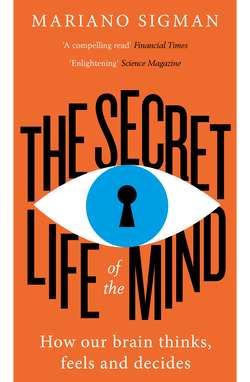Читать книгу The Secret Life of the Mind: How Our Brain Thinks, Feels and Decides - Mariano Sigman - Страница 32
The body in the casino and at the chessboard
ОглавлениеThe key experiment showing how decisions are based on hunches was done with two decks of cards.
As in so many board games, this experiment employs ingredients from real life decision-making: winnings, losses, uncertainty and risk. The game is simple but unpredictable. In each turn, the player merely chooses which deck to pick a card from. The number of the card chosen indicates the coins that the player wins (or loses if it’s negative). Since the cards are turned face down, the player has to evaluate, over the course of the entire experiment, which of the two decks is more profitable.
This is like someone in a casino who has to choose between two one-armed bandits just by observing how many times and how much each one pays out over a period of time. But, unlike in the casino, this game thought up by a neurobiologist, Antonio Damasio, is not purely random: there is one deck that on average pays out more than the other. If this rule is discovered, then the next step is simple: always choose the deck that pays more. Lo and behold, an infallible system.
The difficulty lies in the fact that the player has to discover this rule through pondering a long history of payouts amid large fluctuations. After much practice, almost everyone discovers the rule, is able to explain it and, naturally, starts to choose cards from the correct deck every time. But the real finding happens along the way to this discovery, among intuitions and hunches. Even before being able to articulate the rule, the players start to play well and more frequently choose cards from the correct deck. In this phase, despite playing much better than when they were choosing randomly, the players cannot explain why they opt for the correct deck (the one that pays out more in the long term). Sometimes they don’t even know they are choosing one deck more than the other. But unequivocal signs show up in their bodies. In this part of the experiment, when players are about to choose the incorrect deck, their skin conductance increases, indicating a rise in sweating, which is in turn a reflection of an emotional state. Which is to say that the players cannot explain that one of the decks gives better results than the other, but their bodies already know it.
My colleague María Julia Leone, a neuroscientist and international chess master, and I carried out this experiment on the chessboard, following the Borgesian concept of chess as a metaphor for life. Two masters face off. They have thirty minutes to make a series of decisions that will organize their armies. On the board, it is a battle to the death and emotions are running high. During the game we trace the players’ heartbeats. Heart rate – just like stress – increases over the course of the game, as time runs out and the end of the battle approaches. Their heart rates also spike when their opponent commits an error that will decide the outcome of the game.
But the most significant discovery we made was this: a few seconds before the players made a mistake, their heart rate changed. This means that in a situation with countless options, with a complexity that is similar to that of life itself, the heart panics before making a bad decision. If the players could recognize that, if they were able to listen to what their hearts are telling them, they could perhaps avoid many of their errors.
This is possible because the body and the brain hold the keys to decision-making long before we are consciously aware of those elements; the emotions expressed in our bodies function as an alarm to alert us to possible risks and mistakes. This destroys the idea that intuition belongs to the realm of magic or soothsaying. There is no conflict between hunches and science; in fact, quite the opposite: intuition functions hand in hand with reason and deliberation, fully in the realm of science.
